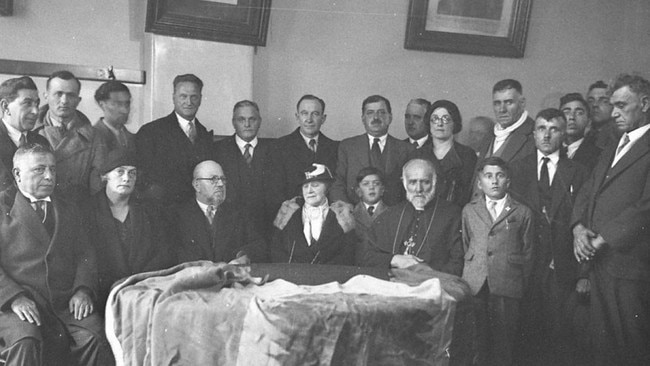The history of a Parramatta Rd sign installed in the northern Lebanese village of Kfarsghab
In a tiny village in the Middle East is a sign that is very out of place. But the connection to western Sydney goes back at least 129 years.
- Fire tears through Merrylands apartment block
- Smog expected for western Sydney due to extreme summer heat
In the mountains of northern Lebanon, there is a little sign that connects the village of Kfarsghab to western Sydney.
In recent days an image of a Parramatta Rd sign in the mountain village has gone viral on Reddit and Instagram. Many commenters have queried whether the sign was stolen and installed on a pole on the main street, but a council spokeswoman said that it was definitely not stolen.
Parramatta Eels players Mitchell Moses, Jarryd Hayne, Michael Jennings, Nathan Brown and Tim Mannah have been the latest in a long line of tourists and ex-pats to snap a pic under the sign.
“The sign was first presented to the village of Kfarsghab in Lebanon by former councillor Joseph Barakat in the 1990s,” she said.
In 2009, while on a private trip, former Parramatta deputy Lord Mayor Chiang Lim gifted a newer Parramatta Rd sign to the village, which now has pride of place on the main street.
Migration of residents of Kfarsghab, pronounced ka-fra-sorb, to Parramatta goes back to the 1880s, when the first, a Rosie Broheen, changed to Rosie O’Brien by a customs officer, settled in the area after a gruelling three month journey from Lebanon to the Australian colony.
A journal of Lebanese migration to Sydney explains that the very first Kfarsghab immigrants to Parramatta sent money back home and encouraged other members of their family to migrate.

Despite having at least 14,000 Parramatta people who are able to trace their ancestry from Kfarsghab, there is now fewer than 1000 people that remain in the village.
A recent interview with a descendant of one of the first immigrants, said the first families from Kfarsghab were well established in Parramatta by the time the post-war wave of migration to Sydney began.
By 1976, approximately 43,000 Lebanese nationals had arrived in Australia since the end of World War II, the majority arriving during the civil war in Lebanon in 1975—1976.
Unlike the Australian Parramatta Rd, the Kfarsghab version is a proud centrepiece to the town.
In 2007 it was marked as one of the finest roads in the north — it did not have a single bump.


